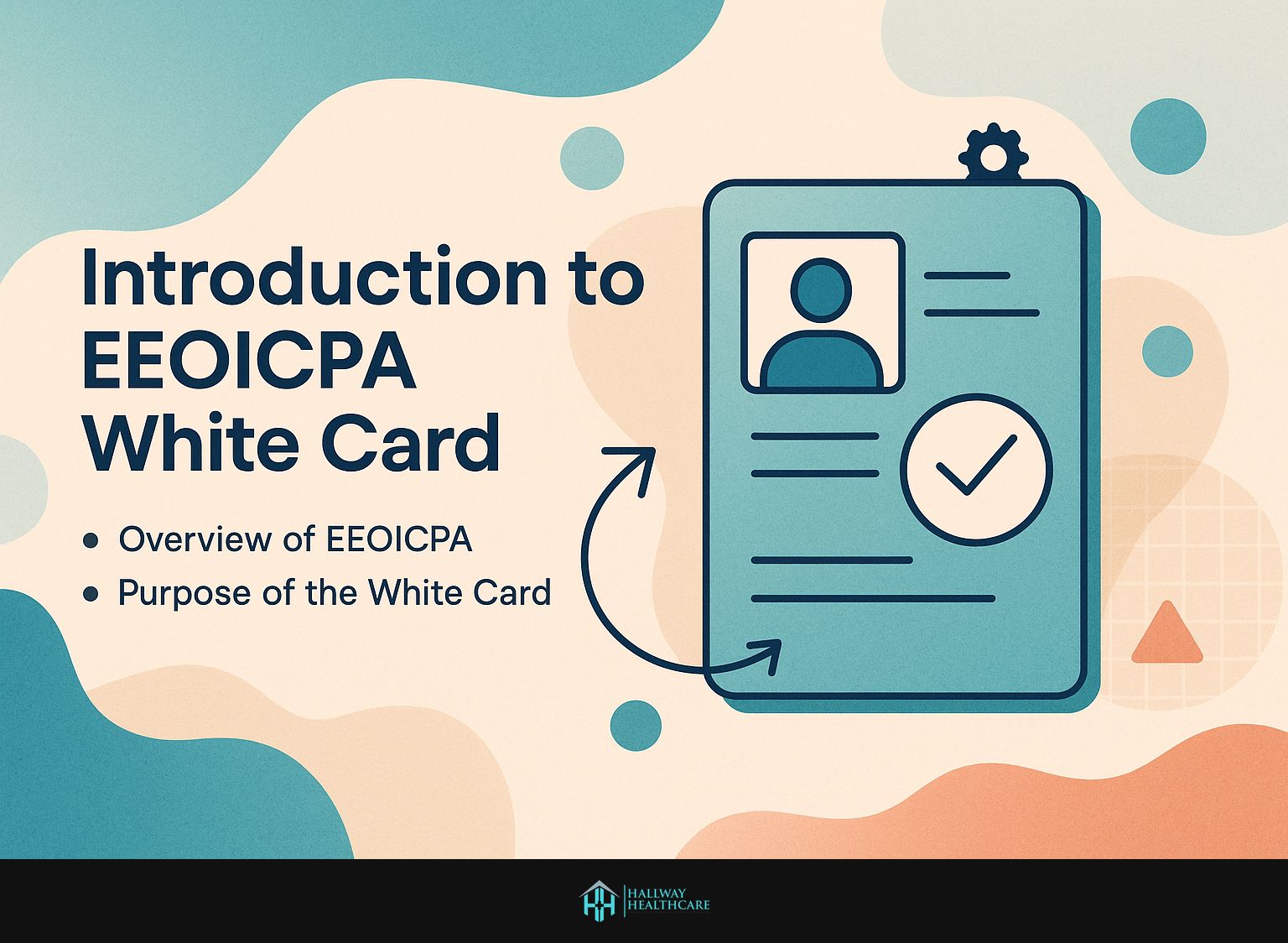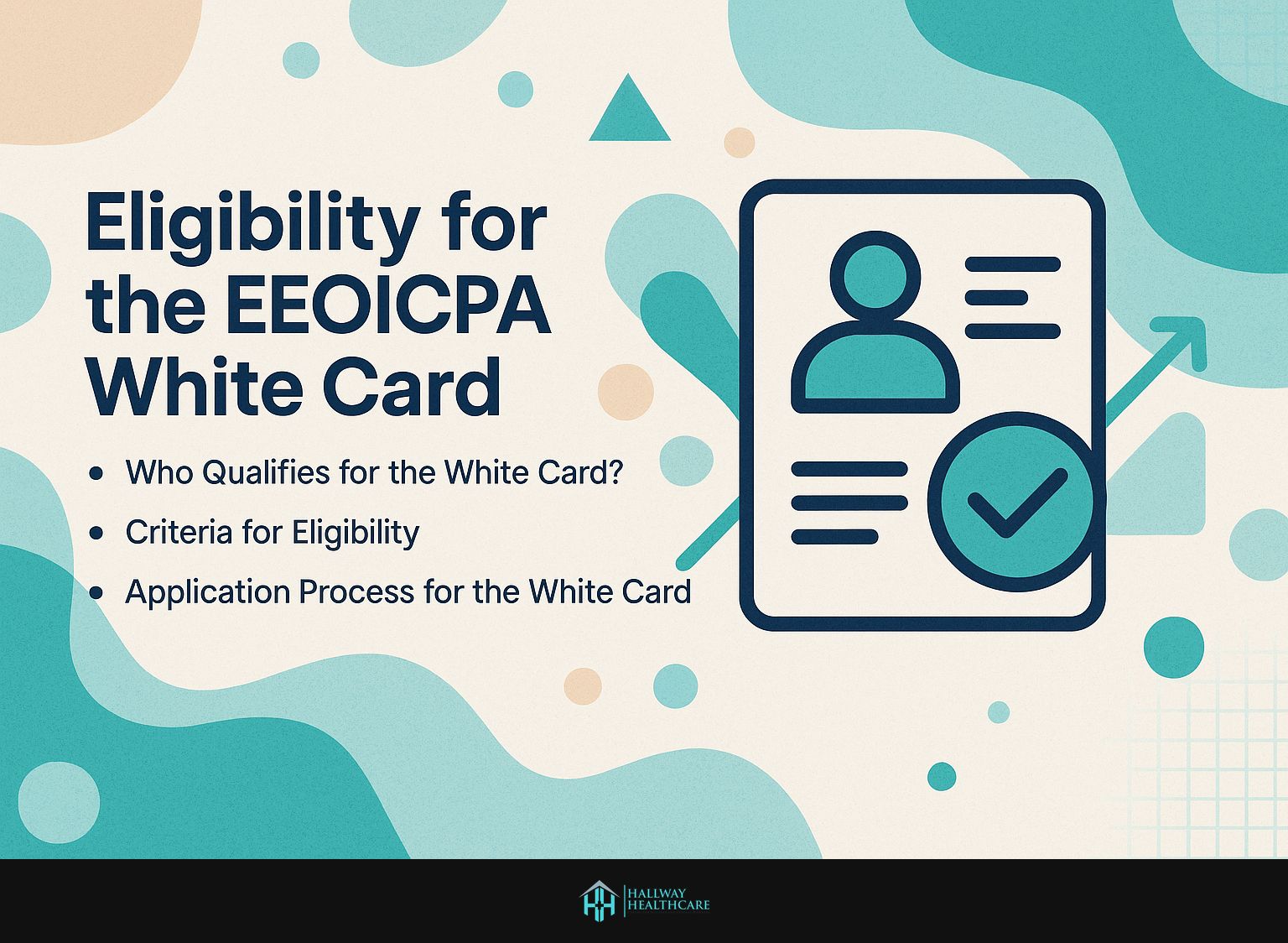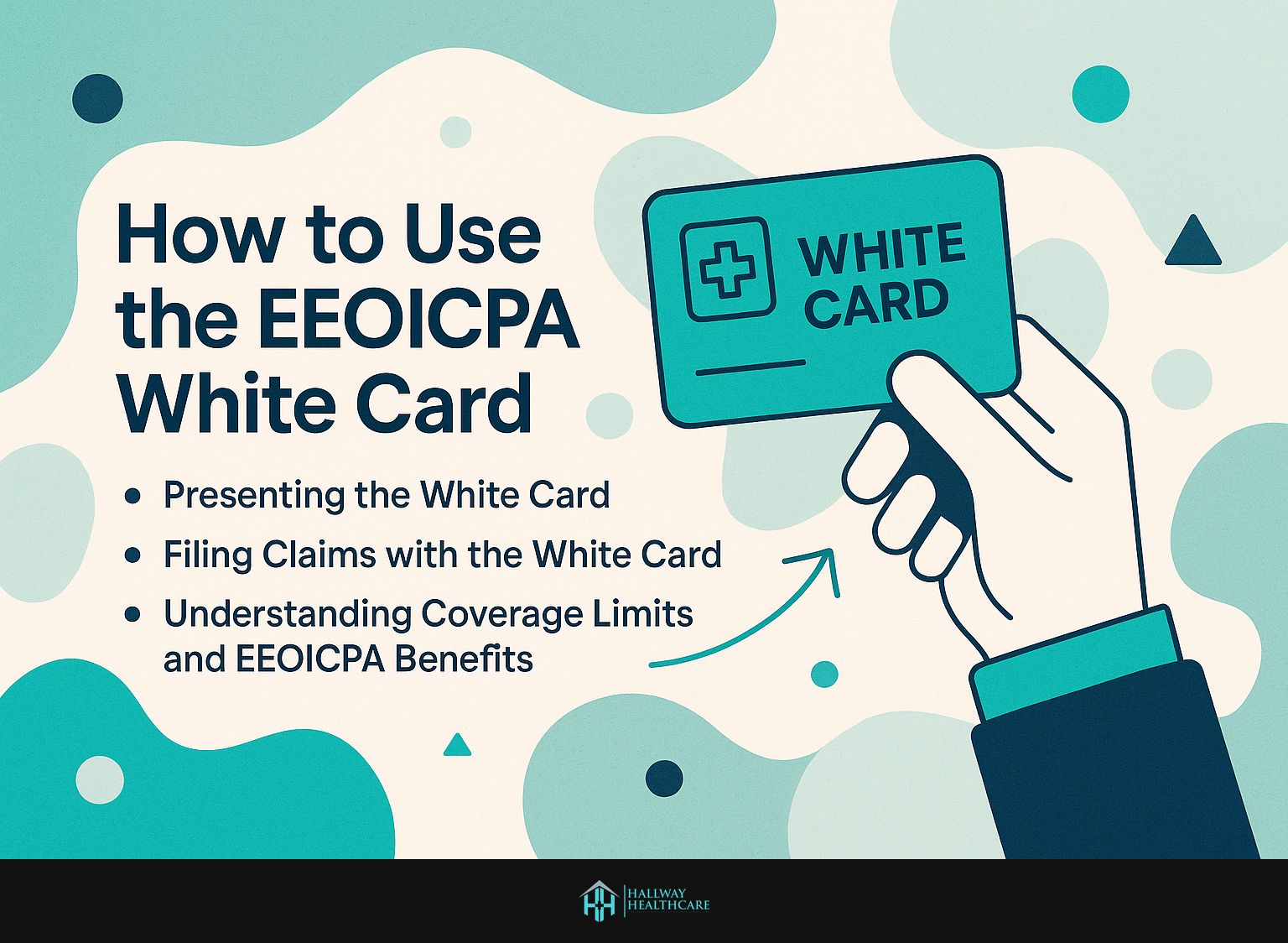
Overview
Understanding the EEOICPA White Card is important for energy employees with occupational illnesses. This guide breaks down EEOICPA benefits, including vital medical benefits administered by the U.S. Department of Labor. With support from Conduent and Acentra Customer Service, you’ll learn who qualifies for the White Card Program, how to apply, and how to maximize your benefits. Equip yourself with the information needed to navigate this critical resource effectively.
Key Takeaways:
- The EEOICPA White Card provides healthcare coverage, compensation for medical costs, and access to additional resources for eligible individuals.
- You must meet specific criteria to qualify for the White Card, and you will need to complete an application.
- Understanding coverage limitations, presenting the card, and filing claims are important factors in effectively utilizing the White Card.

Introduction
The Energy Employees Occupational Illness Compensation Act (EEOICPA) was established to provide compensation programs and medical benefits to workers adversely affected by radiation exposure or toxic substances.
The EEOICPA, established in 2000, supports individuals in the Department of Energy’s nuclear weapons program. To date, over 100,000 claims have been processed, addressing illnesses such as asbestosis, lung cancer, and other conditions associated with toxic exposures.
The program offers compensation of up to $400,000 to eligible Energy Employees. Affected individuals are encouraged to apply through the Department of Labor. The application process requires the verification of employment history and medical documentation to substantiate the compensation claims made.
Purpose of the Card
The White Card plays a vital role in identifying eligible workers who are entitled to comprehensive medical benefits under the Energy Employees Occupational Illness Compensation Program Act (EEOICPA), which includes coverage for chronic beryllium disease and other approved conditions.
Holders of the White Card gain access to a range of essential medical services, including coverage for chronic beryllium disease.
For example, a cardholder needing a nebulizer for respiratory help may have the costs fully covered. Furthermore, regular check-ups with specialists for ongoing health monitoring are included, ensuring that care is comprehensive and tailored to meet the individual needs of each cardholder.
Eligibility for the White Card
Knowing the eligibility criteria for the EEOICPA White Card helps qualified workers access their benefits.

Who Qualifies?
Eligibility for the White Card is mainly for energy employees with accepted illnesses due to occupational exposure, including uranium miners. Additional qualifying groups for the White Card include workers in the mining sector, radiology professionals, and individuals engaged in environmental remediation activities.
For example, a former uranium miner diagnosed with lung cancer successfully obtained the White Card, which facilitated access to essential health services. Similarly, a technician who was exposed to radiation while performing routine maintenance also received the card, allowing her to pursue compensation for related health issues.
Ultimately, the collection of medical evidence and the submission of an application to the appropriate authority are critical steps in this process.
Criteria for Eligibility
To qualify for the White Card, applicants must connect their conditions to recognized occupational illnesses under the EEOICPA. Accepted conditions include:
- Chronic beryllium disease
- Radiation-induced cancers
- Cancers from nuclear weapons testing
To support a case, provide medical records showing diagnosis and treatment eligibility. You must also provide documentation that confirms exposure during employment, like work history or military service records.
Using tools like the Site Exposure Matrix (SEC) helps collect important employment and exposure information. This comprehensive approach ensures that the application is thorough and enhances the likelihood of approval.
Application Process
Applying for the EEOICPA White Card involves a clear process that follows guidelines from the U.S. Department of Labor.
The initial step involves gathering the requisite documentation, which includes proof of employment at a covered facility as well as relevant medical records to support medical condition claims.
Next, visit the Conduent website to download the application form.
Complete the form carefully, and submit it with your documentation.
Applicants should be prepared for an average processing time of 4 to 6 months, during which they may need to respond to additional information requests.
You can track your claim through Conduent’s online portal. This keeps you informed throughout the process.
Benefits
The EEOICPA White Card offers significant benefits, including healthcare coverage and financial compensation for medical expenses related to recognized illnesses.

Healthcare Coverage
Healthcare coverage under the Energy Employees Occupational Illness Compensation Program Act (EEOICPA) White Card encompasses a comprehensive array of services, including hospital care, medical treatments, and access to trusted medical providers.
Specifically, this coverage includes prescription medications, respiratory equipment, and durable medical equipment such as wheelchairs and prosthetics.
Beneficiaries need to obtain a White Card from the Department of Labor to access these services. Once they possess the card, individuals may seek care from approved healthcare providers, thereby ensuring that their treatments and prescriptions are adequately covered.
Beneficiaries should keep detailed records of medical visits and expenses. This helps with the reimbursement process for out-of-pocket costs. Additionally, utilizing the EEOICPA helpline can provide valuable information regarding available pharmacy billing resources.
Compensation for Medical Costs
Eligible cardholders can receive compensation for medical expenses due to occupational illnesses. This helps reduce financial burdens.
To get reimbursed, submit a claim form with corresponding receipts. It is crucial to ensure that all documentation is clear and complete to prevent any potential delays. Utilizing an online portal, if available, can also expedite processing times.
Some programs offer direct deposits to make the reimbursement experience easier. It is advisable to familiarize oneself with the specific timelines and limits outlined in your policy to efficiently maximize available benefits.
Access to Additional Resources
Along with its direct benefits, the EEOICPA White Card also provides access to various resources to help meet the healthcare needs of eligible workers and their families.
Patients have the opportunity to utilize several support programs, including Patient Navigators who assist them in navigating the complexities of the healthcare system, ensuring they receive the necessary care.
Healthcare grants help offset medical expenses not fully covered by the White Card.
Medical alert systems, often available through community programs, provide added safety for seniors and those with chronic conditions.
Local advocacy groups provide valuable information and emotional support. This enhances the healthcare experience for cardholders and their families.
How to Use It
To use the EEOICPA White Card effectively, you need to understand how to present it, file claims, and know the coverage limits.

When visiting medical providers, it is essential to present the EEOICPA White Card appropriately to ensure that cardholders receive their entitled benefits without complications.
To present the White Card, individuals should bring a government-issued photo ID and a copy of their entitlement letter. Upon arrival, it is advisable to inform the provider that you are a cardholder seeking services under the EEOICPA.
Additionally, verify your eligibility by calling the provider’s office to confirm their acceptance of the White Card. Establishing clear communication regarding your benefits prevents delays and helps process claims smoothly.
It is also recommended to keep a record of all communications for future reference, especially regarding EEOICPA eligibility concerns.
Filing Claims with the White Card
Filing claims with the EEOICPA White Card is simple but requires careful attention to detail. This ensures timely reimbursement for medical expenses, including travel.
To initiate a claim, begin by gathering the essential documents: the completed claim form (EC-1), a copy of your White Card, and any relevant medical records.
Subsequently, contact Acentra Customer Service at 1-800-736-6001 for assistance in confirming that you possess all necessary information, including impairment ratings and employer responsibility documentation.
Once you have compiled your documents, submit your claim either by mail or through their online portal, ensuring that you retain copies of all submitted materials for your records.
You can expect a response within 30 days, and it is advisable to follow up proactively should you not receive any updates.
Understanding Coverage Limits and Benefits
Cardholders must understand the coverage limits of the EEOICPA White Card to manage their healthcare expenses effectively. This card provides coverage for specific medical conditions associated with employment in the atomic weapons industry; however, not all medical services are eligible for coverage.
Approved conditions include chronic beryllium disease and silicosis. Treatments for non-covered conditions, like cosmetic procedures, are not funded. It is imperative to document all appointments and treatments, as pre-approval may be required for certain services.
Cardholders should refer to the official EEOICPA documentation for a comprehensive list of covered conditions, ensuring they fully utilize the available benefits. This A-Z benefits guide is a great place to start.
Challenges and Considerations
The EEOICPA White Card offers significant benefits but also presents challenges. Cardholders must navigate these to maintain their benefits.

Common Issues Faced by Cardholders
Cardholders may experience various common issues, including delays in claim processing and misunderstandings regarding covered services. To effectively address these challenges, it is advisable to begin by reviewing the policy documents for specific coverage terms.
Disputes and Appeals Process
Cardholders must understand the disputes and appeals process for denied claims. This knowledge is crucial for effective resolution.
To start an appeal, review the denial notice carefully. Identify the specific reasons for the denial.
It is important to gather the necessary documentation, including the original claim form, supporting documents, and any relevant policy information.
Submit appeals within 180 days of denial, as required by most insurance companies. For example, a policyholder appealed a denied claim due to missing records. By submitting additional documentation quickly, they received compensation.
It is advisable to retain copies of all correspondence and documentation sent during the appeals process, as well as a timeline of communications, for effective tracking and reference.
Recap of Key Points
This article summarizes key aspects of the White Card. It includes important benefits like healthcare coverage and compensation.
The White Card grants eligible recipients access to comprehensive healthcare services specifically related to illnesses resulting from exposure to toxic substances during their employment.
Individuals must submit an application through the Department of Energy to access these benefits. Upon approval, claimants can access a range of healthcare providers, like Hallway Healthcare, and necessary treatments.
It is also imperative to maintain accurate records of all medical visits and treatments, as this documentation supports ongoing claims for reimbursement. This practice ensures that affected individuals receive the necessary support for their health and well-being.
 Skip to content
Skip to content
